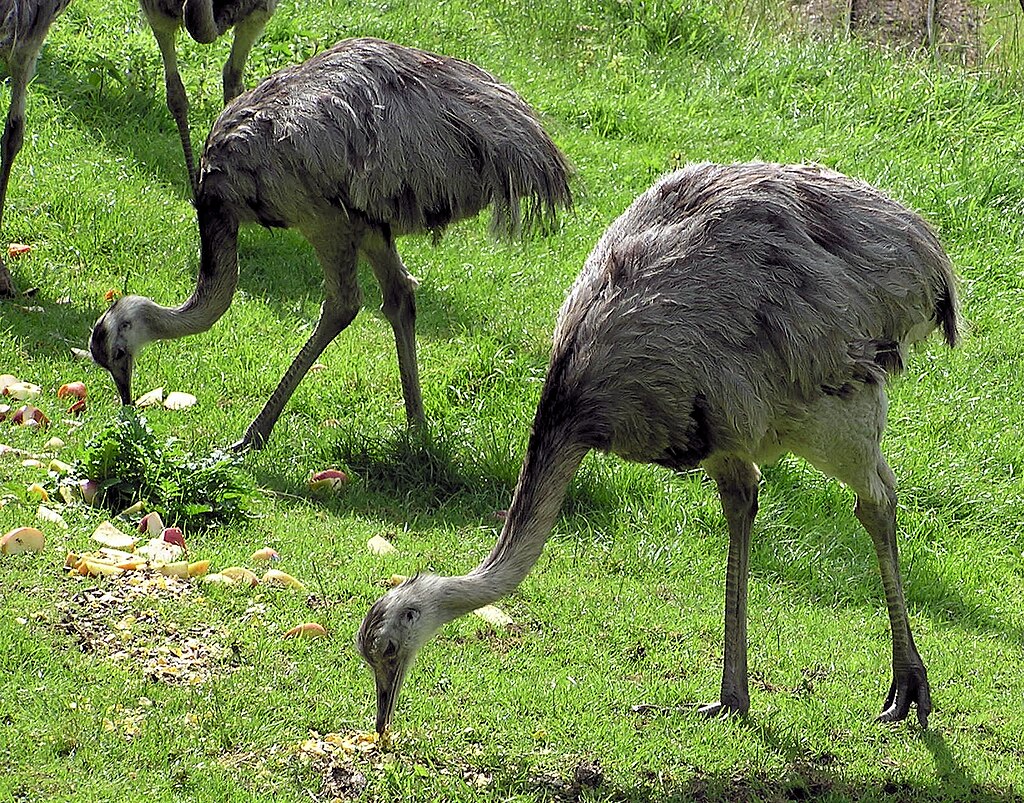
Etymology
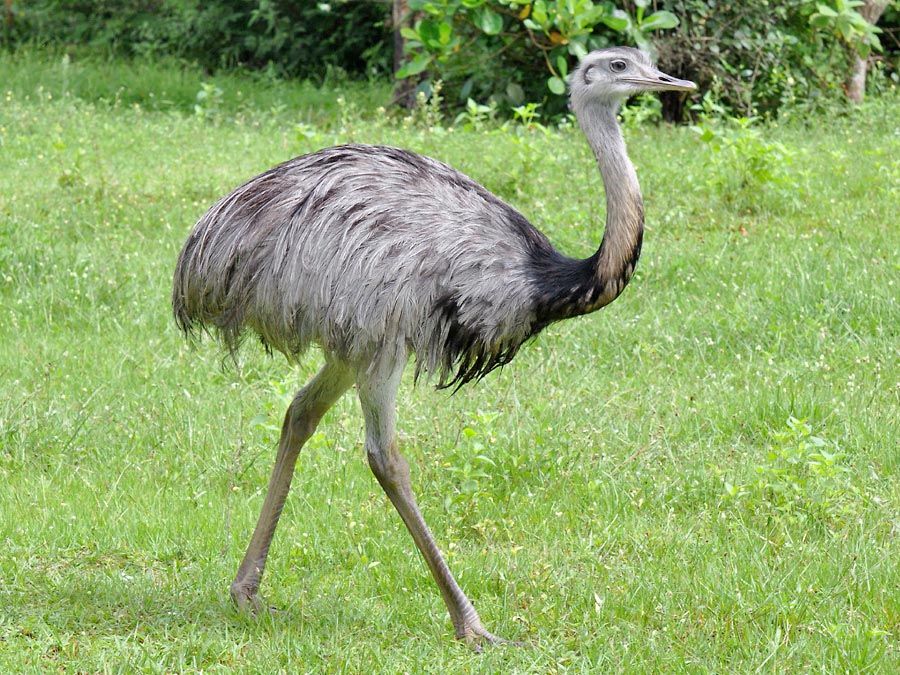
The genus name was given in 1752 by Paul Möhring and adopted as the English common name. Möhring named the rhea based on the Greek Titan Rhea, whose name is derived from the Greek Rhea (῾Ρέα) from έρα "ground". This was fitting, the rhea being a flightless ground bird. Depending on the South American region, the rhea is known locally as ñandú guazu (Guaraní, meaning big spider, most probably in relation to their habit of opening and lowering alternate wings when they run), ema (Portuguese), suri (Aymara and Quechua),[1][2] or choique (Mapudungun). Nandu is the common name in many European languages.
Taxonomy and systematics
Greater rheas (Rhea americana) dustbathing. The two individuals on the left are leucistic.
- Greater rhea Rhea americana
- R. a. americana, live in the cerrados (bushlands) and caatinga of central and eastern Brazil.
- R. a. intermedia, southeastern Brazil in Rio Grande do Sul and Uruguay.
- R. a. nobilis, eastern Paraguay, east of Rio Paraguay.
- R. a. araneipes, chaco of Paraguay to Bolivia and Mato Grosso in Brazil.
- R. a. albescens, plains of Argentina south of Rio Negro.
- Darwin's rhea or lesser rhea Rhea pennata
Description
Greater rhea head close up
Distribution and habitat
A rhea at the Parque Luro, Argentina
A small population of rheas has emerged in northeastern Germany, after several couples escaped from an exotic meat farm near Lübeck in the late 1990s. Contrary to expectations, the large birds have adapted well to the conditions in the German countryside.[11] Currently there is a population of well over 100 birds in an area of 150 square kilometres (58 sq mi) between the river Wakenitz and the A20 motorway, slowly expanding eastwards.[12] A monitoring system has been in place since
2008.[13]
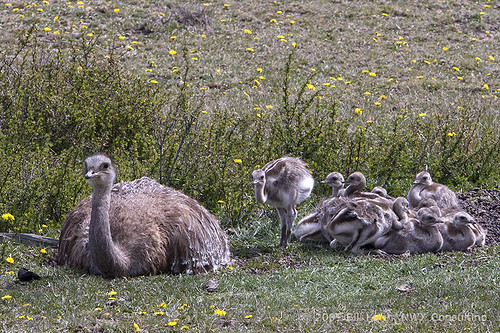
Behavior
Individual and flocking
Feral greater rhea flock in Germany.
During the non-breeding season they may form flocks of between 20 and 25 birds,[14] although the lesser rhea forms smaller flocks than this. When in danger they flee in a zig-zag course, using first one wing then the other, similar to a rudder. During breeding season the flocks break up.[6]
Diet

For the most part, rheas are vegetarian and prefer broad-leafed plants but they also eat fruits, seeds and roots, as well as insects such as grasshoppers and small reptiles and rodents.[6] Young rheas generally eat only insects for the first few days. Outside of the breeding season they gather in flocks and feed with deer and cattle.[14]
Reproduction
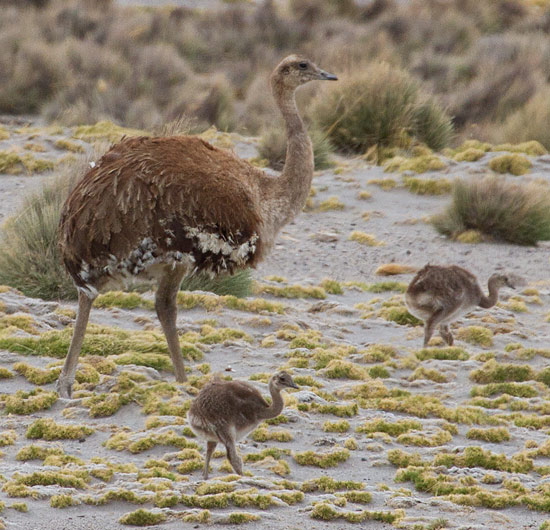

Rheas are polygamous, with males courting between two and twelve females. After mating, the male builds a nest, in which each female lays her eggs in turn. The nest consists of a simple scrape in the ground, lined with grass and leaves.[8] The male incubates from ten to sixty eggs. The male will use a decoy system and place some eggs outside the nest and sacrifice these to predators, so that they won't attempt to get inside the nest. The male may use another subordinate male to incubate his eggs, while he finds another harem to start a second nest.[6] The chicks hatch within 36 hours of each other. The females, meanwhile, may move on and mate with other males. While caring for the young, the males will charge at any perceived threat that approach the chicks including female rheas and humans. The young reach full adult size in about six months but do not breed until they reach two years of age.[8]
Status and conservation
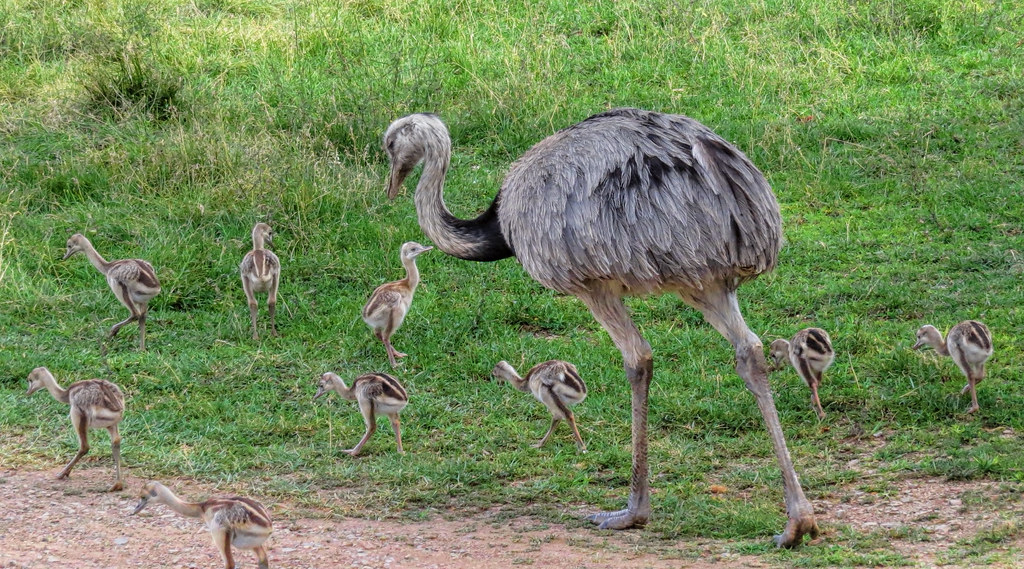
The numbers of both the lesser and greater rhea are decreasing as their habitats are shrinking. Both are considered near threatened by the IUCN and have been for the last 15 years[when?]. The IUCN also states that they are both approaching vulnerable status.[9][10][15][16]
Human interaction
Rheas have many uses in South America. Feathers are used for feather dusters, skins are used for cloaks or leather, and their meat is a staple to many people.[6]
The gaucho people traditionally hunt rheas on horseback, throwing bolas or boleadoras, a throwing device consisting of three balls joined by rope, at their legs which immobilises the bird.[14] The rhea is pictured on Argentina's 1 Centavo coin minted in 1987, and on the Uruguayan 5 peso coin.



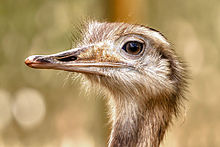


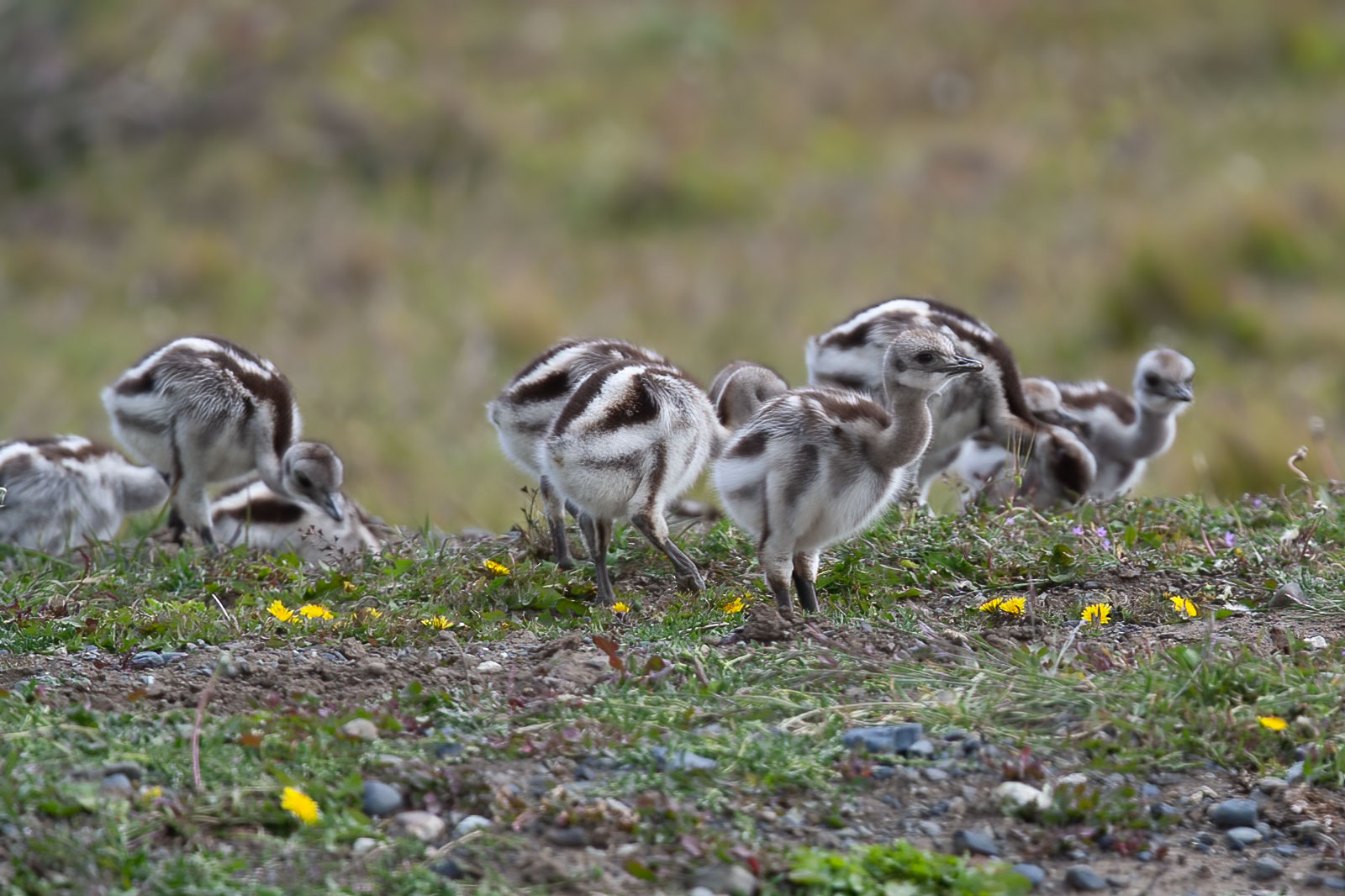
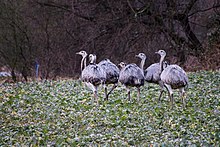

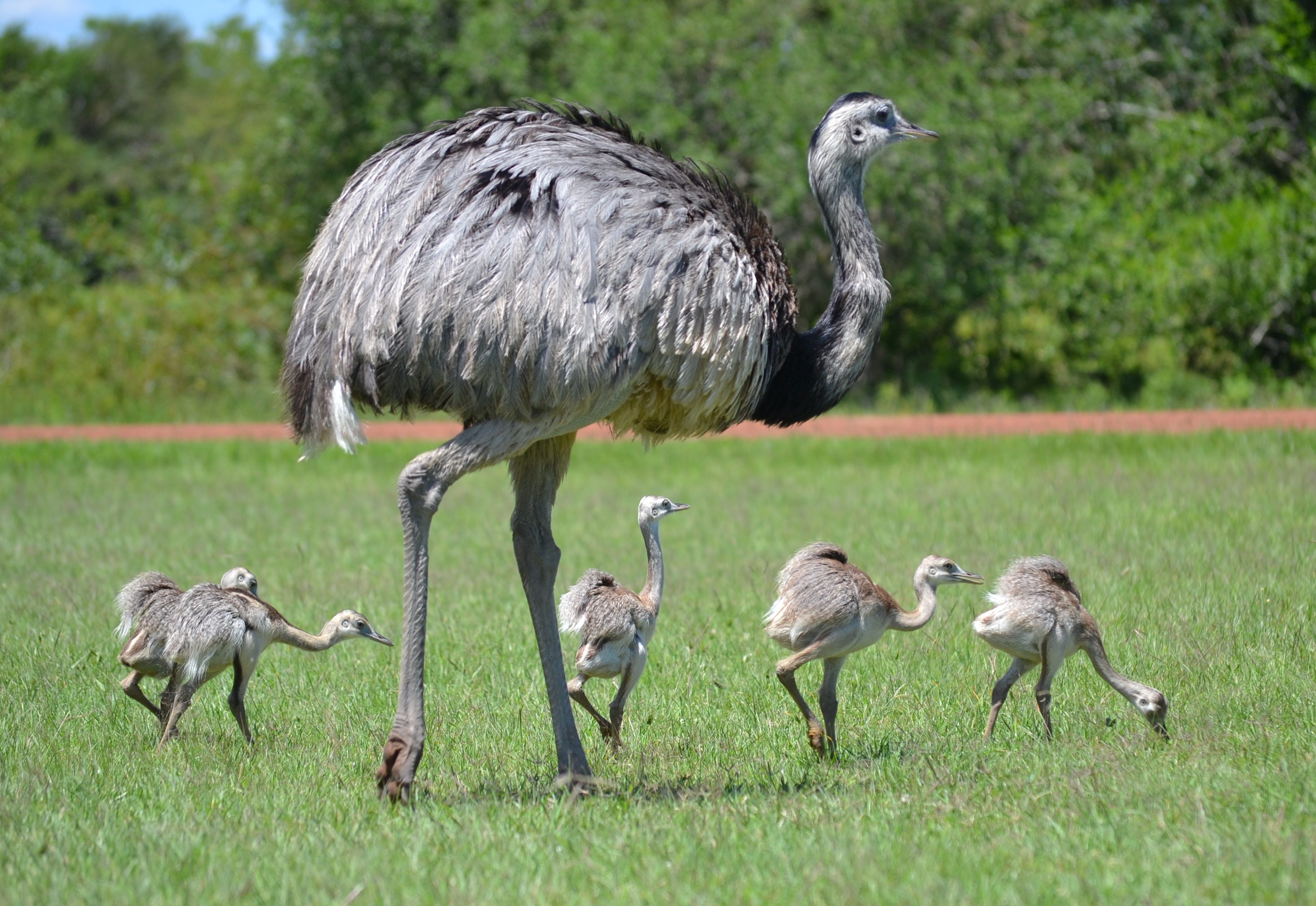

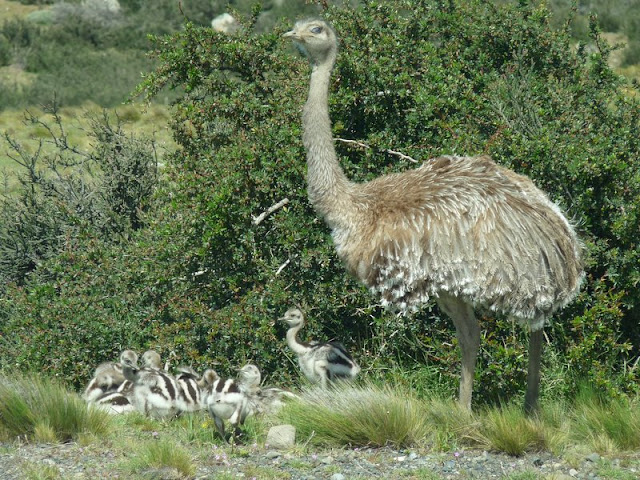
No comments:
Post a Comment
Note: Only a member of this blog may post a comment.